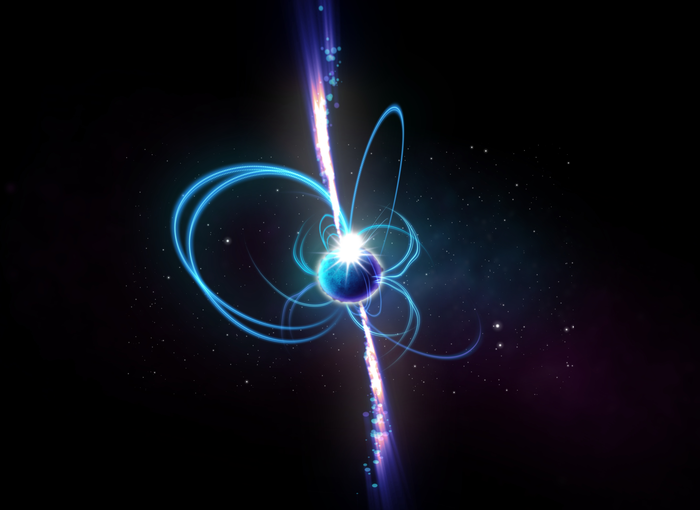Scientists have detected a radio signal that pulses like a heart originating from an unknown galaxy billions of light-years from Earth.
Its source emits pulses that are one million times brighter than comparable stars in our own galaxy, and its radio bursts are one thousand times longer than typical.
The signal, which is a form of quick radio burst, seems to flash with startling regularity, according to researchers.

However, the origin of the burst recorded by Canadian telescopes remains a mystery. Fast radio bursts (FRBs) originate from mostly unknown sources in space and typically last just a few milliseconds.
This one may last up to three seconds, which is almost 1,000 times longer than the typical FRB.
The researchers identified radio wave bursts that recur every 0.2 seconds in a rhythm like a beating heart. The team claims it is the longest-lasting and clearest fast radio burst ever discovered.
Its origin is unknown, however, it is located in a faraway galaxy few billion light-years from Earth.
The team believes it might have originated from either a radio pulsar or a magnetar, both of which are forms of neutron stars – the compact, fast-spinning cores of massive stars.
The signals it releases, such as the frequency of bursts and how they vary as the source travels away from Earth, may be used to calculate the expansion rate of the universe.
Since the discovery of the first rapid radio burst in 2007, hundreds of similar flashes have been spotted around the cosmos.
Between the years 2018 and 2020, scientists identified the first rapid radio bursts that seemed to generate radio waves in a consistent manner.
This signal consisted of four days of random bursts repeated every sixteen days.
The 16-day schedule gave the bursts their regularity, but the bursts’ signals were random.
On December 21, 2019, a telescope in British Columbia, Canada, detected the new finding.

Dr. Daniele Michilli was operating the telescope, which is part of the Canadian Hydrogen Intensity Mapping Experiment when the odd signal occurred.
He explained: “It was unusual. Not only was it very long, lasting about three seconds, but there were periodic peaks that were remarkably precise, emitting every fraction of a second – boom, boom, boom – like a heartbeat.”
The scientists discovered parallels between it and radio pulsar and magnetar emissions from our galaxy.
Radio pulsars are neutron stars that emit beams of radio waves, which seem to pulse as the star spins, while magnetars create a comparable emission as a result of their strong magnetic fields.
However, the next radio burst’s emissions were almost a million times brighter.
Dr. Michilli speculates that the luminous flashes originated from a distant radio pulsar or magnetar that is ordinarily less bright as it spins but for an unexplained reason emitted a sequence of brilliant bursts in a rare three-second window that the team was fortunate enough to capture.
He added: “CHIME has now detected many fast radio bursts with different properties.
“We have seen some that live inside clouds that are very turbulent, while others look like they are in clean environments.
“From the properties of this new signal, we can say that around this source, there is a cloud of plasma that must be extremely turbulent.”
The team hopes to observe the strange explosion again in the future to learn more about its origin and neutron stars in general.
Dr Michilli, from Massachusetts Institute of Technology in the US, added: “This detection raises the question of what could cause this extreme signal that we have never seen before, and how can we use this signal to study the universe.”
Future telescopes are expected to detect tens of thousands of rapid radio bursts every month, at which time we may discover a great deal more of these periodic signals.
Reference(s): Peer-Reviewed Research Paper





